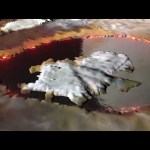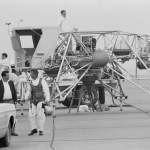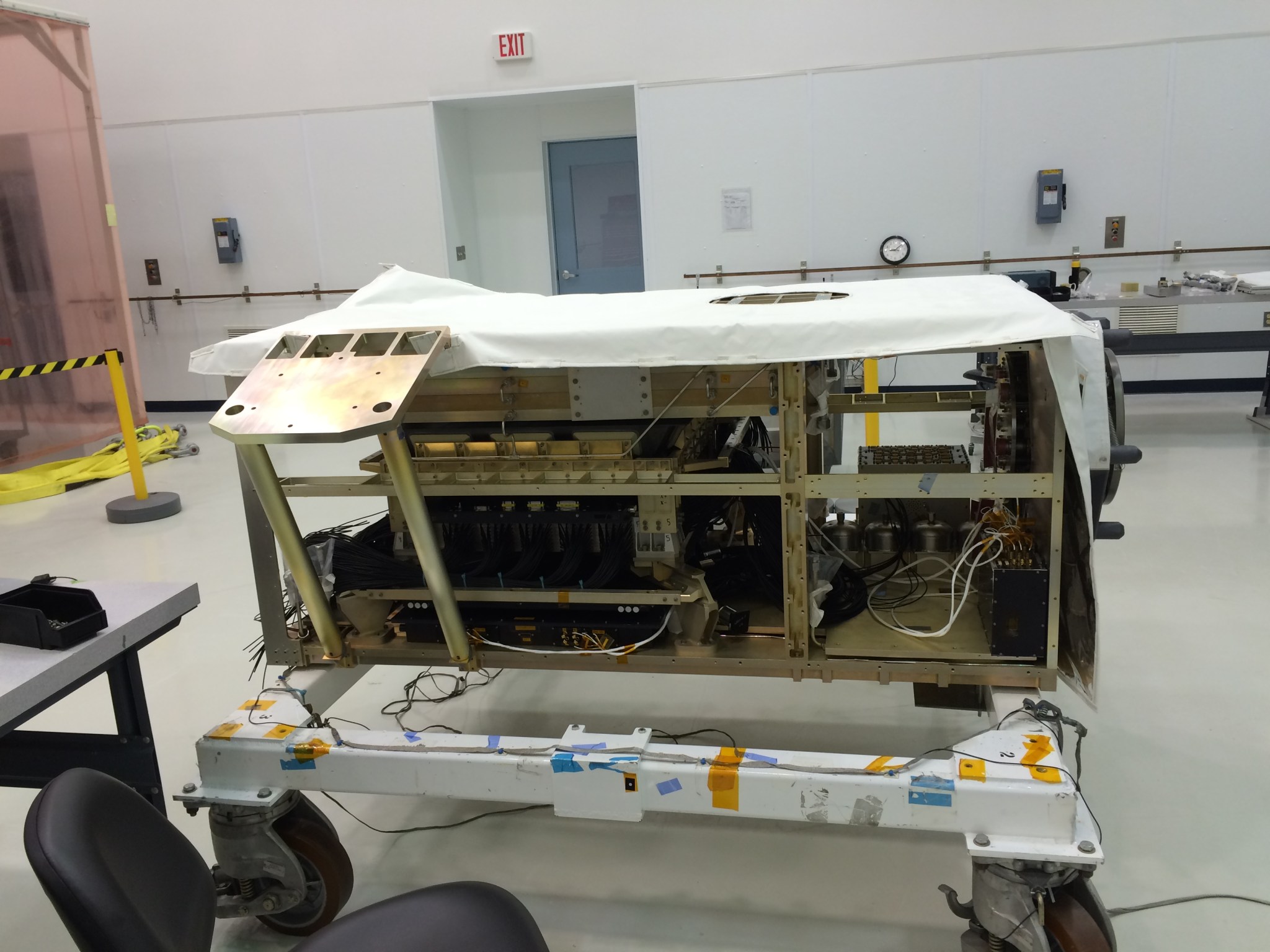
Name: Victor Eyo
Formal Job Classification: Aerospace engineer
Organization: Code 548, Mechanical Systems Branch, Wallops Flight Facility
What do you do and what is most interesting about your role at Goddard? How do you help support Goddard’s mission?
I am the mechanical product design lead (PDL) for the Cosmic Ray Energetics and Mass (CREAM) payload. As PDL, I manage engineers and technicians to ensure that we deliver a quality product on time. I meet with NASA management, the launch vehicle provider (SpaceX), the principal investigator (University of Maryland, College Park), hardware and material vendors, and I coordinate with other NASA centers to make sure that all parties are in up to date on the status of mechanically related functions of the payload.
What is CREAM’s mission?
CREAM is one of many projects addressing NASA’s 2010 Science Plan for the Science Mission Directorate’s Science Goal for Astrophysics. CREAM addresses some of the mysteries of cosmic rays and will berth on the ISS next year. My task is to make that happen.
Who are the international players involved with CREAM?
CREAM is led by the University of Maryland (UMD) in collaboration with scientists from GSFC, South Korea, Mexico, Canada and France. CREAM is manifested on SpaceX 12 for launch to the ISS in April 2017. Once there, CREAM will measure cosmic ray density within a specific energy spectrum for a minimum of three years and transmit data to UMD scientists to do whatever they do to make sense of the data.
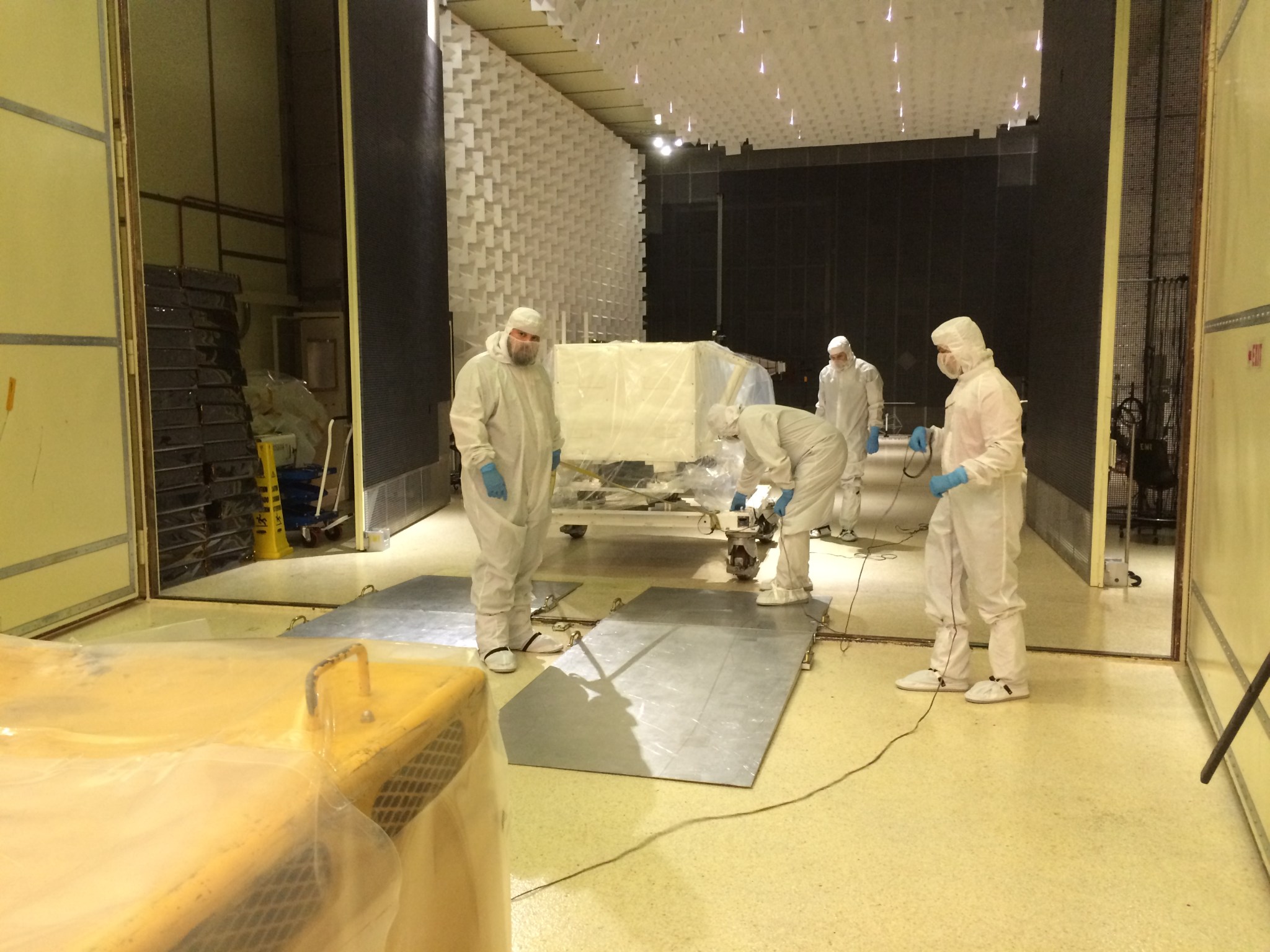
How was your role with CREAM different from other work you have done?
We expect the different parties to supply fully flight functional pieces of hardware to my integration team. Because some of our partners did not know how to build a fully flight functional instrument, as PDL it was on me to organize them to ensure that they delivered flight functional hardware. We had to walk some instrument providers through the basics of designing hardware for space flight including the types of analyses to perform, how to perform those analyses, assumptions to make, software limitations, results presentation and how to qualify for space flight.
I had a team of very smart and experienced engineers who worked late hours, often made even longer due to the many time differences between our collaborators all over the world, to see this through. We provided qualification details, documentation, facility requirements, personnel needs and other requirements. It was an inspiring experience.
What was a major lesson you learned from your role with CREAM?
Our pace was very fast. There was never sufficient time to adequately educate non Goddard scientists on the differences between Balloon CREAM and CREAM for ISS. We also needed them to provide us written science requirements for their instruments. In the end, with resources from Goddard, it all worked out.
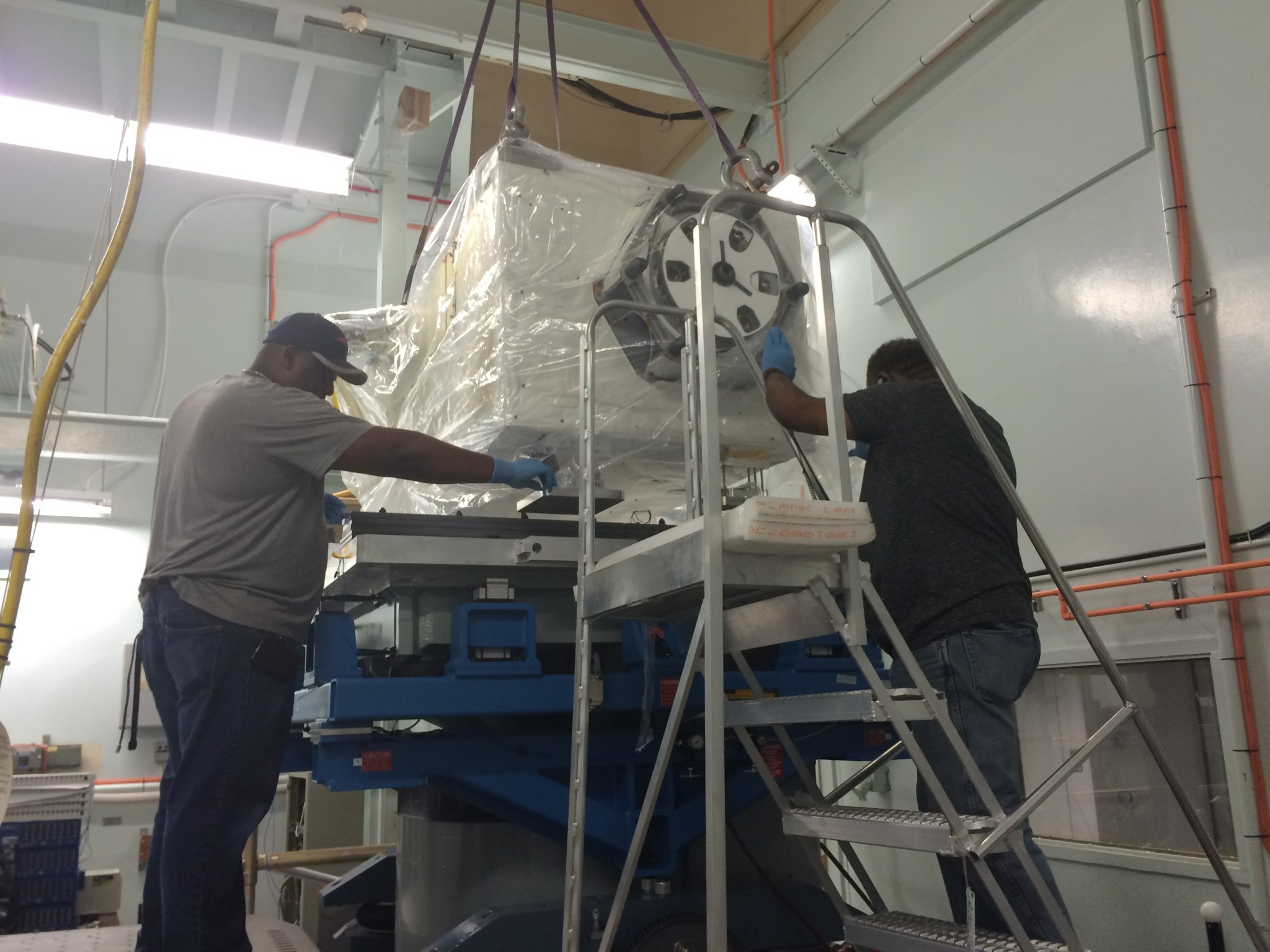
How do you remain calm during this difficult period?
I like to get along with everybody. I have to remain controlled through the various crises which afflict any project. To do this, I go back to the requirements and let them guide me. I try to get people to focus on a resource-based solution to solve problems. I appreciate everyone’s input. We get the best solutions to issues when we work as a team where everyone is contributing. It also helps keep everyone calm. I get frustrated when I don’t have control over matters which affect the ability of my engineers to function at their peak.
Why did you become an aerospace engineer?
I have always been interested in things that fly high and go fast. At a young age, I was inspired by the Apollo moon landing. My goal was to be part of the U.S. space program.
Where were you educated?
I attended primary school in Nigeria. At 13, I had the opportunity to continue my education in France under a government exchange program. I didn’t see any future for me in any space program if I stayed in Nigeria, so I took the opportunity. I was one of about 300 young Nigerians in the program. Many of us including me lived in Vichy, France.
I lived with three other participants in an apartment. We received a monthly stipend which covered everything. For the first year, we studied French exclusively. During the next two years, those of us who were left attended French high schools like any other French high schooler. It was a great experience.
After that, I went to a technical engineering school, in Montpellier, France. It was boring. In my mind, I was not working towards my aerospace goals. At about this same time, the first space shuttle prototype did its first orbit of the Earth. I was glued on my TV screen during the entire thing. This was confirmation that I had chosen the right goal.
At that time, I was also heavily onto painting portraits. I wanted to become a portrait painter too. In France, you had to choose only one major. I decided to go to the U.S. so that I could do both.
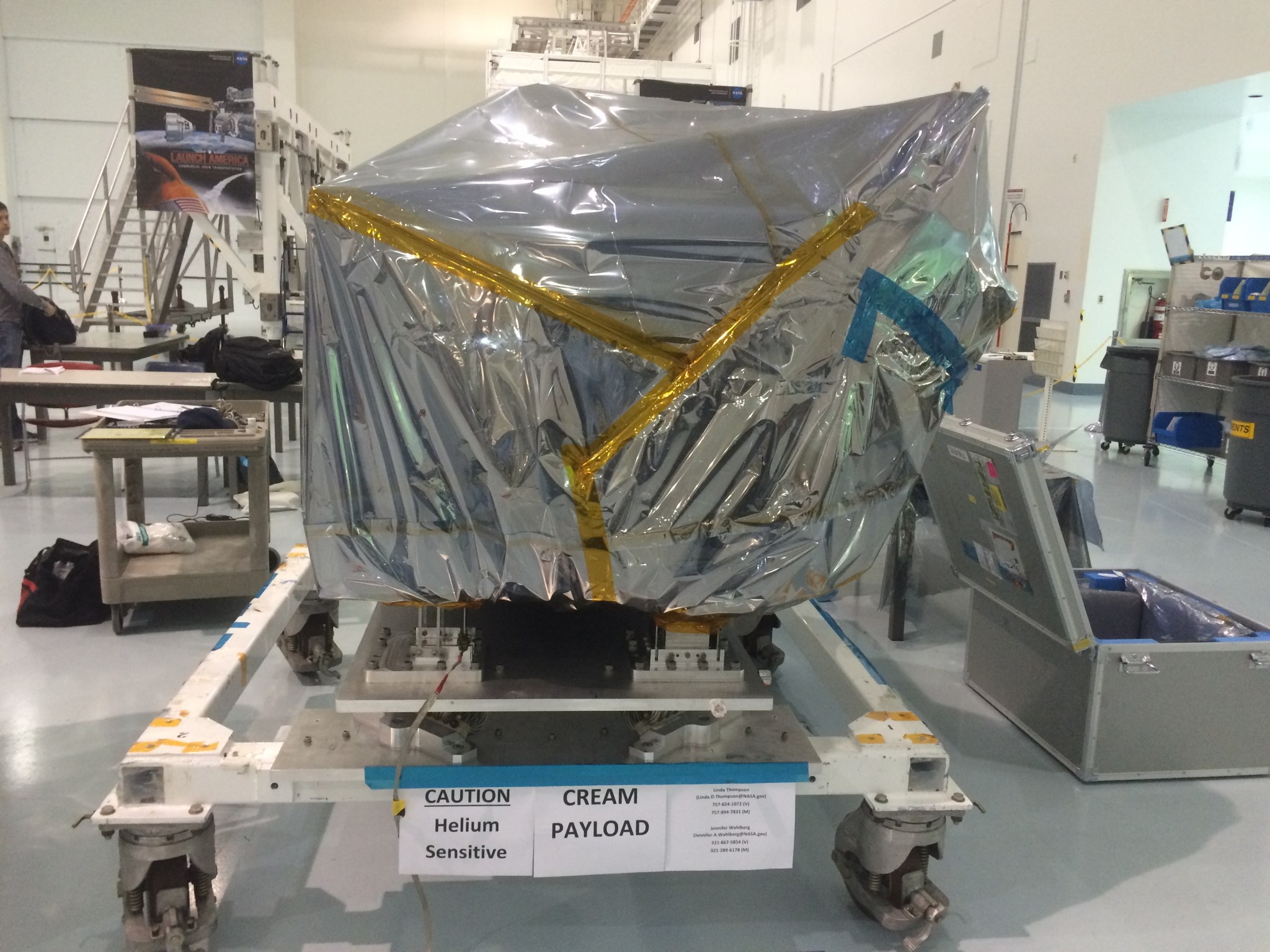
Where did you first go in the U.S.?
I applied to three schools in the U.S. Syracuse University (SU) was the first to accept me, so that’s where I went. I didn’t even look on a map to see where Syracuse was. I had no idea it was so cold in Syracuse.
I worked for the Carlyle Compressor Division of Carrier Corporation while studying for my doctorate. Later, I put my doctorate on hold to gain more experience working full-time with Carrier, primarily doing research and development in compressor noise and vibration reduction. It was probably one of the coolest jobs I ever had.
I have yet to defend my Ph.D. dissertation, which I hope to complete after my three kids are out of the house and in college.
How did you support yourself in college?
My parents sent tuition money, but I also worked as a tennis instructor for Syracuse. In fact, I met my wife through teaching tennis. My wife is now a pediatrician. I used to play in tournaments from Maine to Georgia. My wife and I still play. I learned to play tennis in France. A group of us would watch the French Open on television and try to mimic what they were doing. It was a fun time.
Why did you move to Maryland?
My wife was pre-med in Syracuse when we met. We agreed to move to a more temperate climate after her residency. Salisbury, Maryland, seemed to fit all our needs at the time. Looking back, we made the right call.
How did you come to work at Wallops?
I was involved in research and development for Dresser-Wayne in Salisbury when the company moved to Texas. Texas was not for me at that time. I heard about an opening for a structural analyst at Wallops. I interviewed and got the job.
What is the most interesting thing you have built for Wallop’s balloon program?
We are always creating new stuff to interact with old stuff. The design analysis of the original CREAM balloon gondola ranks high for me. The gondola is a cage that houses the instruments for the balloon payload. The original design was from Swales Aerospace, now Orbital-ATK. I was tasked with analyzing that design. I made it better, working with more experienced WFF engineers. As far as I know, that design is the standard for CREAM gondola designs.
What is the most interesting project you have done for NASA?
The most interesting project I worked on was when I was the lead analyst for the High Gain Antenna System (HGAS) for the Global Precipitation Measurement (GPM) spacecraft. HGAS relays instrument data to Tracking and Data Relay Satellite System (TDRS) satellites. Data is then sent to Goddard via a NASA-wide network. It was my first opportunity as a NASA engineer to lead other engineers on a project. They all knew more than me and it was an absolutely great experience.
What do you like best about working at Wallops?
Wallops is unique compared with other NASA stations because of our orbital and sub-orbital launches. We are fortunate that we get to work on all phases of a project, from concept to fabrication, qualification and launch. Some engineers become so specialized that they only work on one small part of a project. I love the variety.
Also, it’s exciting working at a NASA lunch site. I have watched a few launches from my office parking lot. They are very noisy! And amazing! My favorite is a twilight launch. They are just beautiful to see. Even when we lose a launch vehicle as happened a few years ago, everyone shows a “can-do” attitude. That is not unique to Wallops, but it gives me a special feeling. It’s hard to describe, but I feel like we are all on the same ship going to the same place, so let’s do it already!
Who is the most interesting, inspiring or amazing person you have met or worked with at Wallops?
Whatever success I have is due to the many folks who have pushed me through. Regarding mechanical analysis projects, I thank Scott Gordon (Code 542), Pete Mule (Code 542) and Alan Posey (retired). All three are very smart, very helpful engineers who are always making time to help. All I have to do is ask.
If time travel were possible, when and where would you visit, and why?
The one question all of science has been asking forever is how the universe got started. CREAM for ISS is trying to answer that question, maybe part of it, maybe the entire thing. So, if I could time travel, I would travel back to that time when it all started and then time travel back to report my findings which, I’m sure, no one would believe.
What is your “six-word memoir”? A six-word memoir describes something in just six words.
Passionate. Compassionate. Thoughtful. Impatient. Adventurous. Loving.
Cream URL: http://cosmicray.umd.edu/cream
ISS Cream URL: http://cosmicray.umd.edu/iss-cream/
By Elizabeth M. Jarrell
NASA’s Goddard Space Flight Center, Greenbelt, Md.

Conversations With Goddard is a collection of Q&A profiles highlighting the breadth and depth of NASA’s Goddard Space Flight Center’s talented and diverse workforce. The Conversations have been published twice a month on average since May 2011. Read past editions on Goddard’s “Our People” webpage.


























